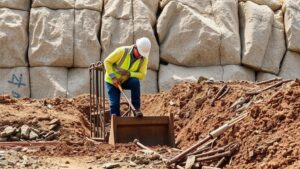Locating Treasure in Submerged Ancient Canals and Trade Ports
Locating Treasure in Submerged Ancient Canals and Trade Ports
The search for maritime treasures in submerged ancient canals and trade ports has captured the imagination of archaeologists and treasure hunters alike. These underwater sites offer a treasure trove of historical artifacts, providing invaluable insights into ancient civilizations and their trade practices. Knowing how to locate and investigate these submerged treasures requires an understanding of both archaeological techniques and modern technology.
Historical Significance of Canals and Trade Ports
An ancient canal or trade port typically served as a critical junction for commerce, connecting various trade routes and facilitating exchanges of goods between regions. For example, the ancient Roman port of Ostia was vital for trade with the Mediterranean, while the Suez Canal laid the groundwork for intercontinental trade as far back as 2000 BCE.
These sites often contain artifacts such as coins, pottery, glassware, and tools which provide insights into trade practices, economic conditions, and cultural exchanges. The presence of a submerged site signals a once-thriving hub of activity, making them prime candidates for treasure hunting.
Techniques for Locating Submerged Sites
Locating submerged canals and trade ports involves a combination of historical research, geographical mapping, and modern technology. Below are key methods used in the search:
- Historical Maps and Records: Researchers often begin their search by consulting historical documentation and ancient maps. e documents can highlight significant trade routes and trade hubs that have since submerged.
- Geophysical Survey Techniques: Techniques such as side-scan sonar and magnetometry can help detect underwater structures or anomalies that may indicate human activity. According to a study by the Journal of Maritime Archaeology, side-scan sonar has become a pivotal tool in locating submerged archaeological sites.
- Remote Sensing: Remote sensing technologies enable archaeologists to visualize and map underwater sites without direct intervention. This method is crucial for large-scale surveys in challenging underwater environments.
Case Studies of Successful Discoveries
Several prominent discoveries highlight the effectiveness of modern techniques in locating treasures in submerged sites:
- Port of Alexandria: In 1992, underwater archaeologist Jean-Yves Empereur led an expedition that uncovered a significant section of ancient Alexandria submerged under the Mediterranean Sea. Utilizing technologies such as underwater robotics, the team discovered artifacts that dramatically reshaped our understanding of Hellenistic trade networks.
- The Lost City of Atlantis: While often steeped in myth, searches for Atlantis near the island of Santorini have revealed ancient structures believed to be remnants of Minoan civilization. Though not directly proven as Atlantis, these discoveries provided cultural and trade insights from antiquity.
Challenges and Ethical Considerations
The search for submerged treasures is fraught with challenges. Environmental conditions, such as shifting currents and visibility issues, can complicate underwater surveys. Also, legal and ethical considerations weigh heavily on treasure hunters. Artifacts found in international waters could spark legal disputes over ownership, leading to ethical dilemmas regarding excavation and preservation.
Also, unregulated treasure hunting can lead to deterioration of sites, undermining historical integrity. The UNESCO Convention on the Means of Prohibiting and Preventing the Illicit Import, Export, and Transfer of Ownership of Cultural Property serves as a guide for ethical excavation practices and responsible stewardship of maritime heritage.
Real-World Applications and Future Directions
The methodologies for locating submerged canals and trade ports have practical implications beyond archaeology. inform urban planning in coastal cities and contribute to environmental conservation efforts. Also, advancements in technology could improve archaeological performance. For example, the use of Artificial Intelligence (AI) to analyze large datasets from surveys could yield novel insights into ancient trade systems.
Conclusion: Actionable Takeaways
Finding treasure in submerged ancient canals and trade ports requires a multidisciplinary approach that includes historical research, advanced technology, and ethical considerations. As maritime archaeology continues to evolve, ongoing efforts must prioritize the preservation of submerged cultural heritage while maximizing the knowledge gained from these invaluable sites.
To engage in such explorations responsibly, aspiring marine archaeologists should:
- Invest time in historical research to form a solid foundation for their explorations.
- Familiarize themselves with technology such as sonar mapping and drone usage for underwater observations.
- Advocate for and adhere to ethical guidelines in their excavations.
By approaching these submerged treasures with respect and scientific inquiry, we can unearth the rich histories buried beneath the waves.



